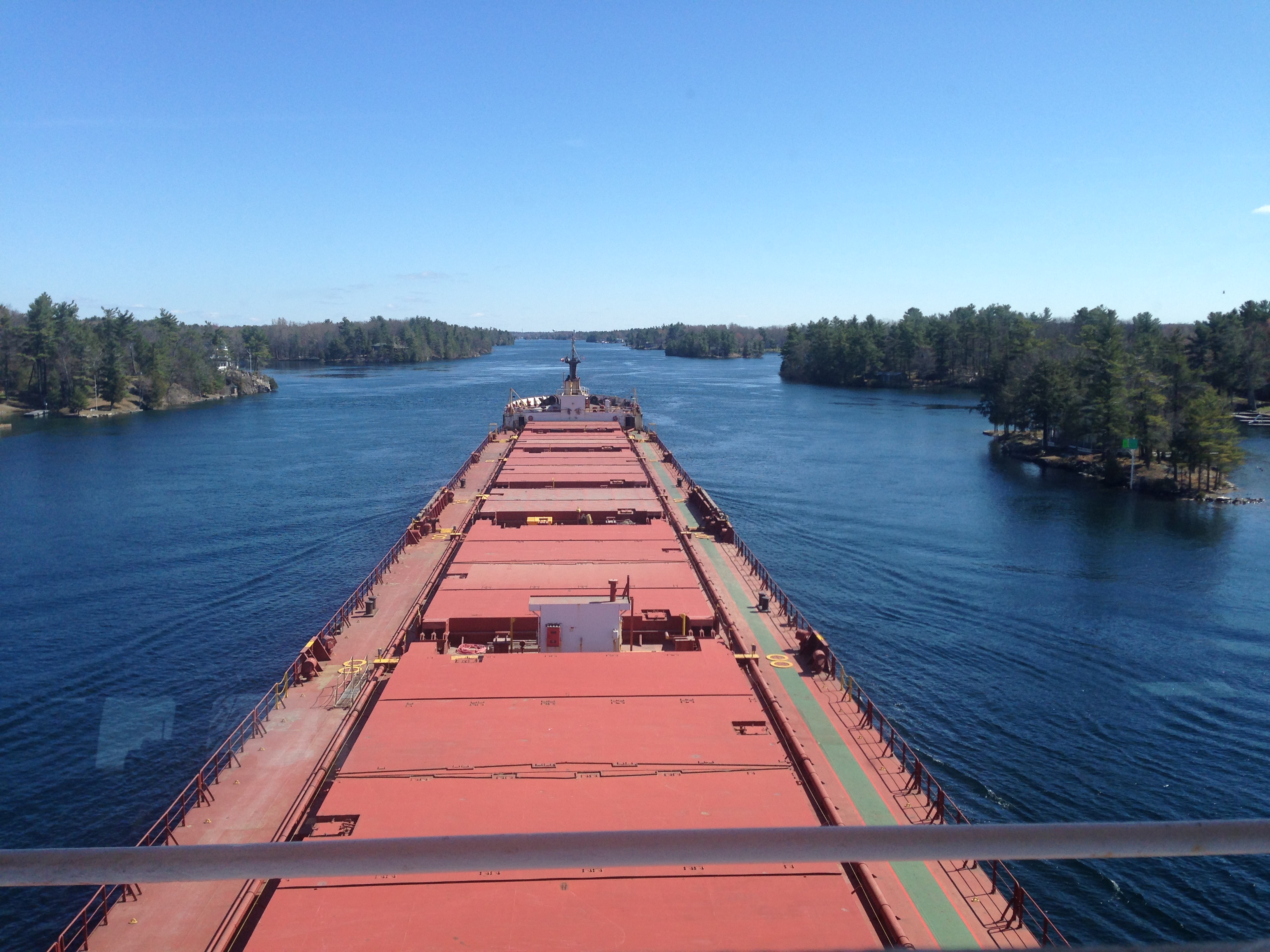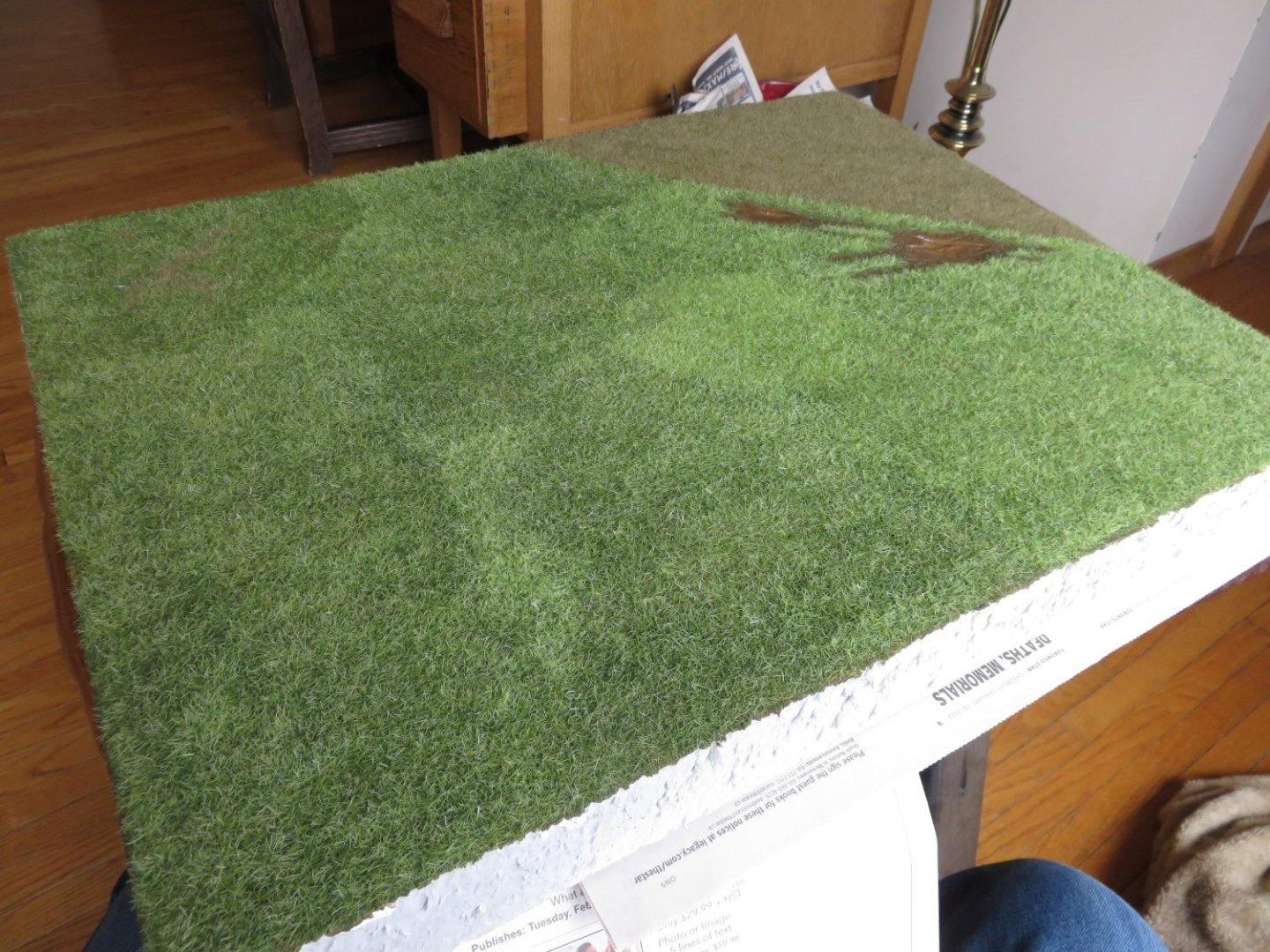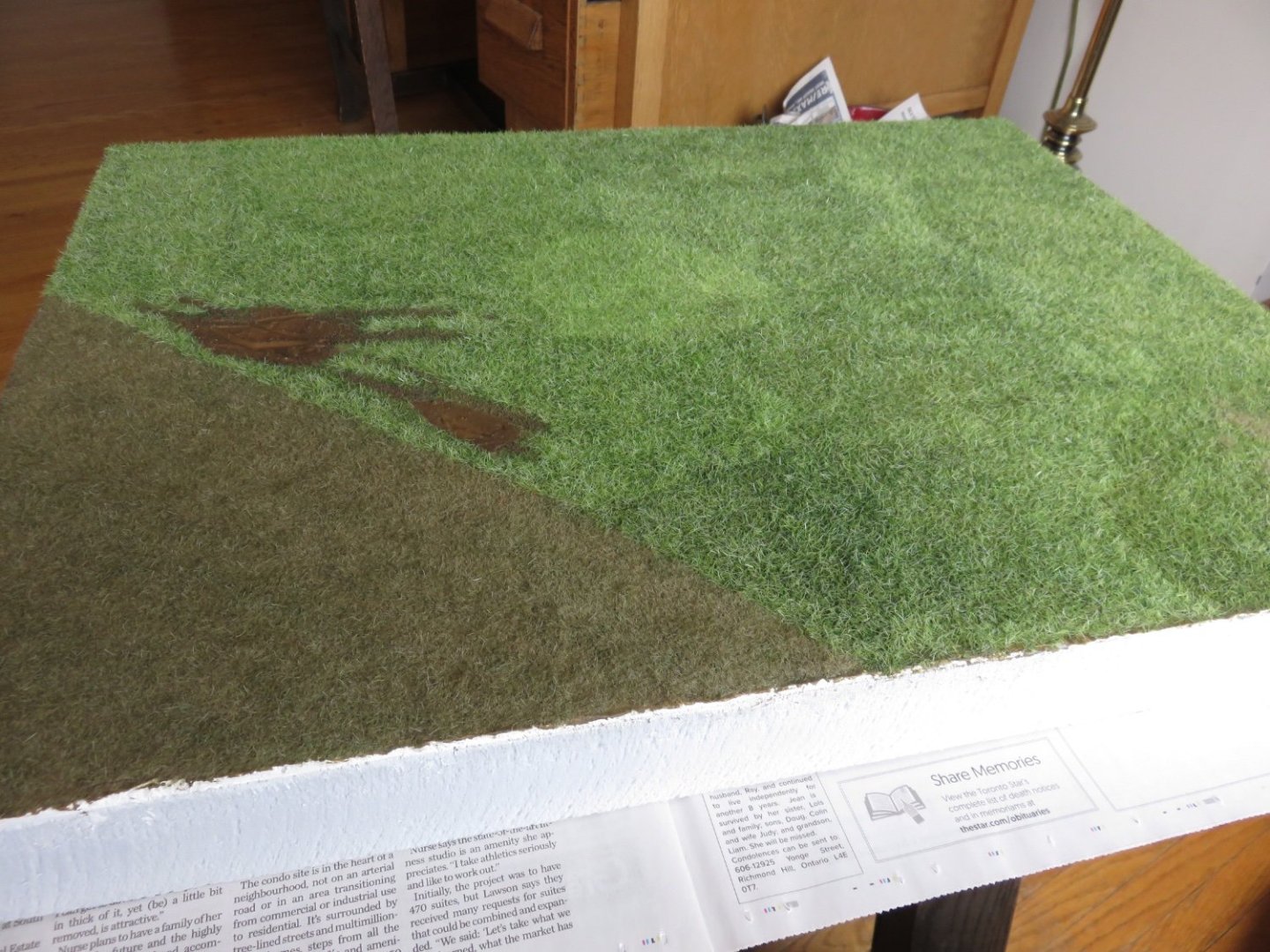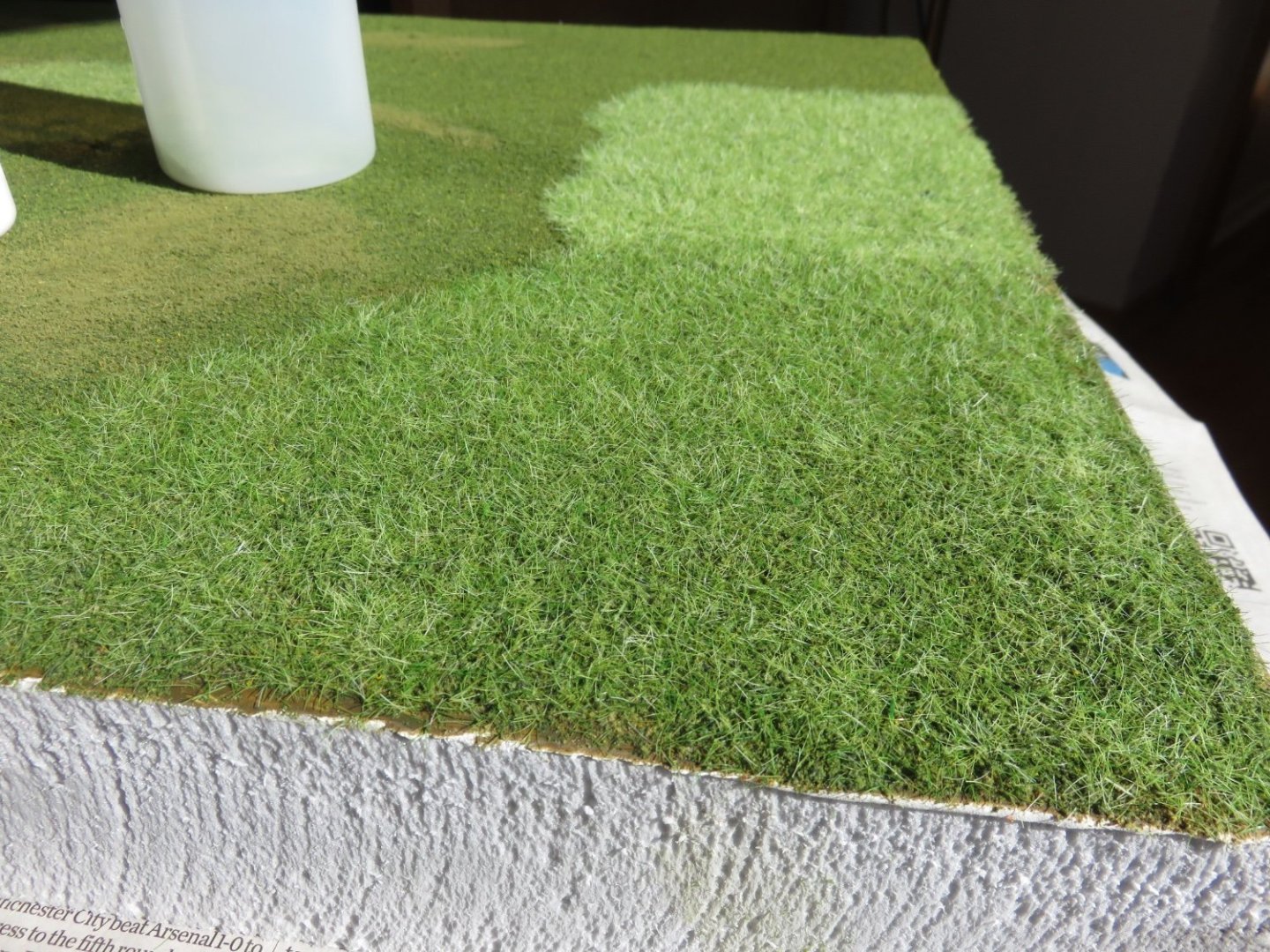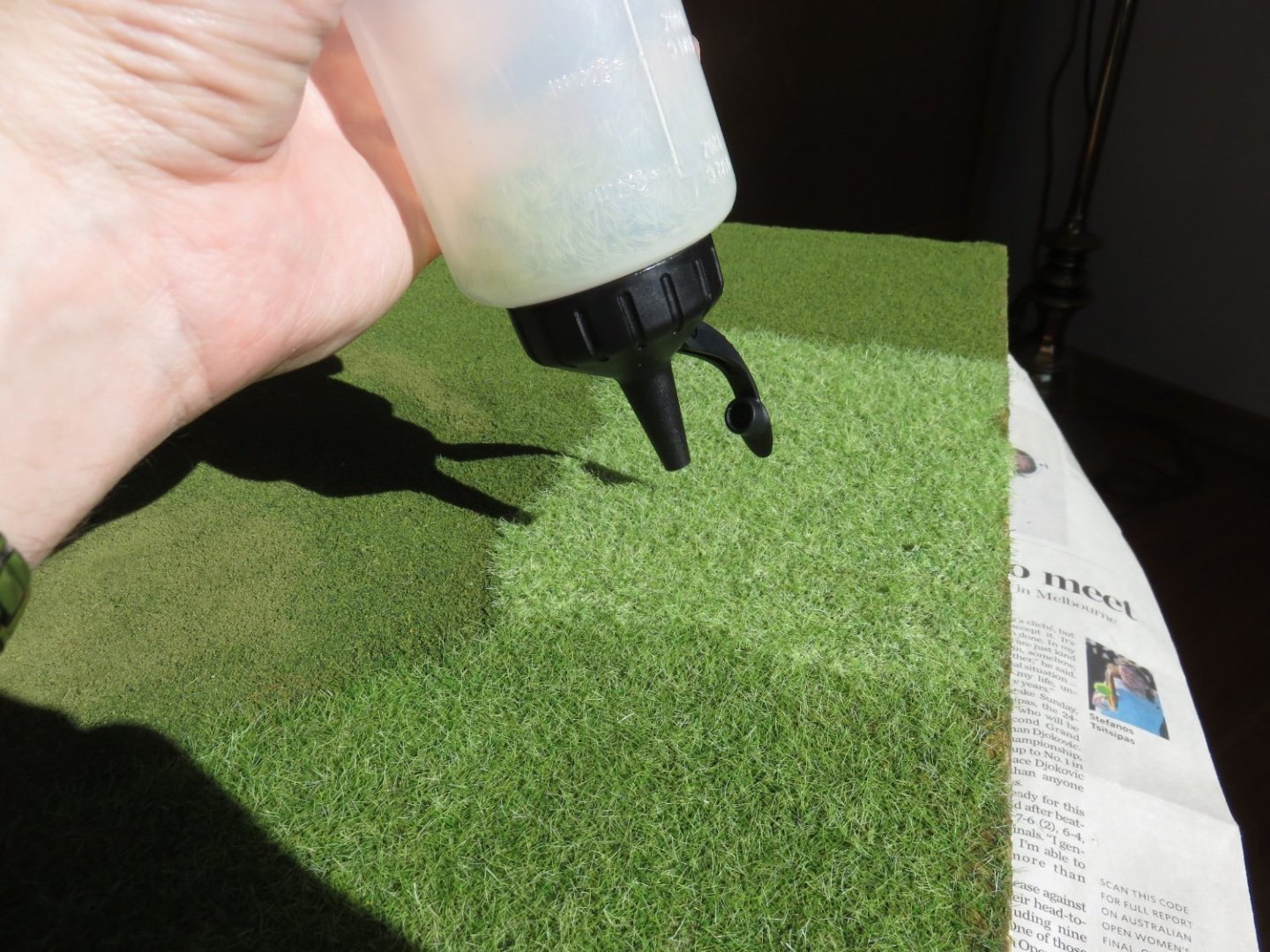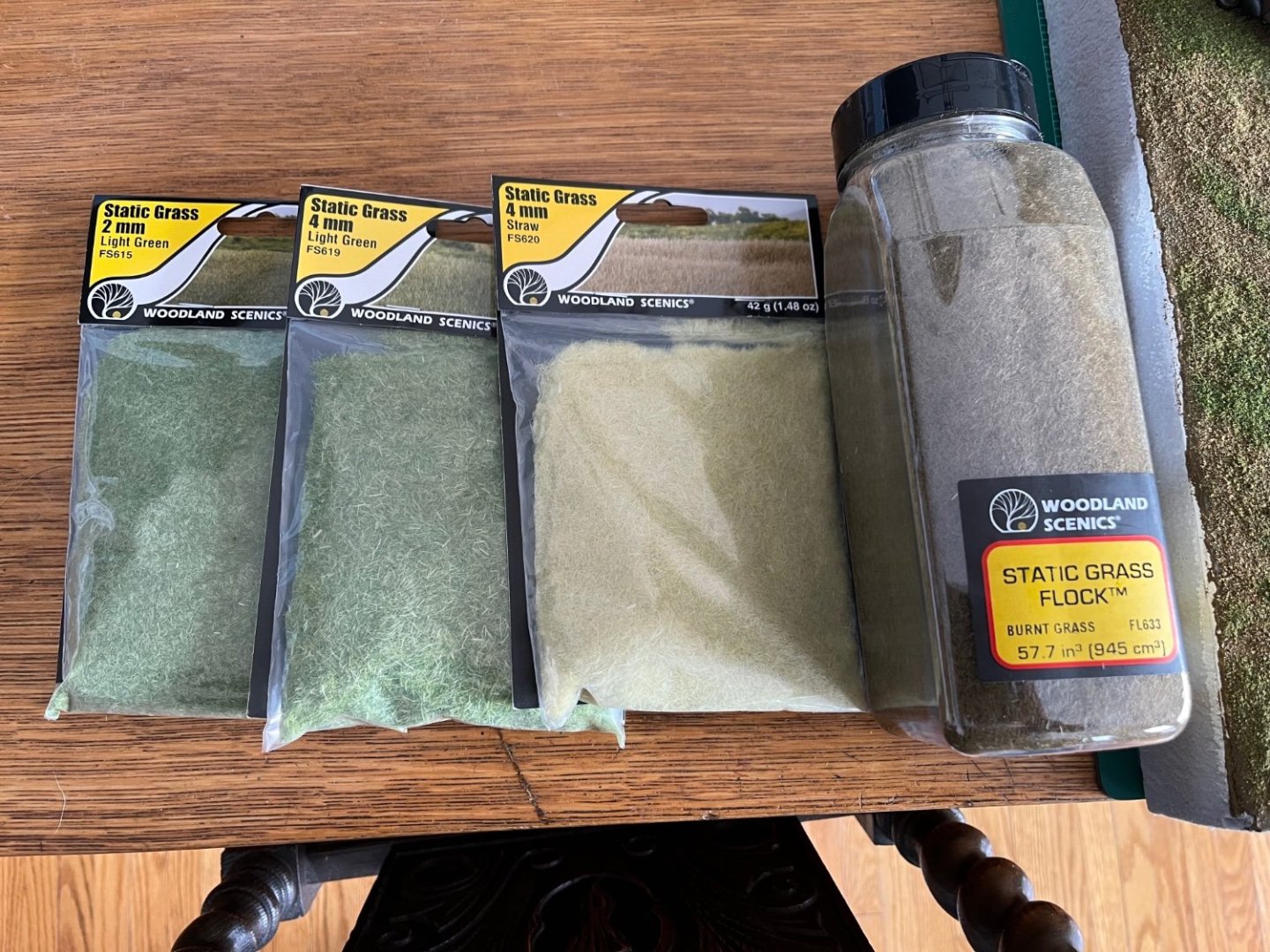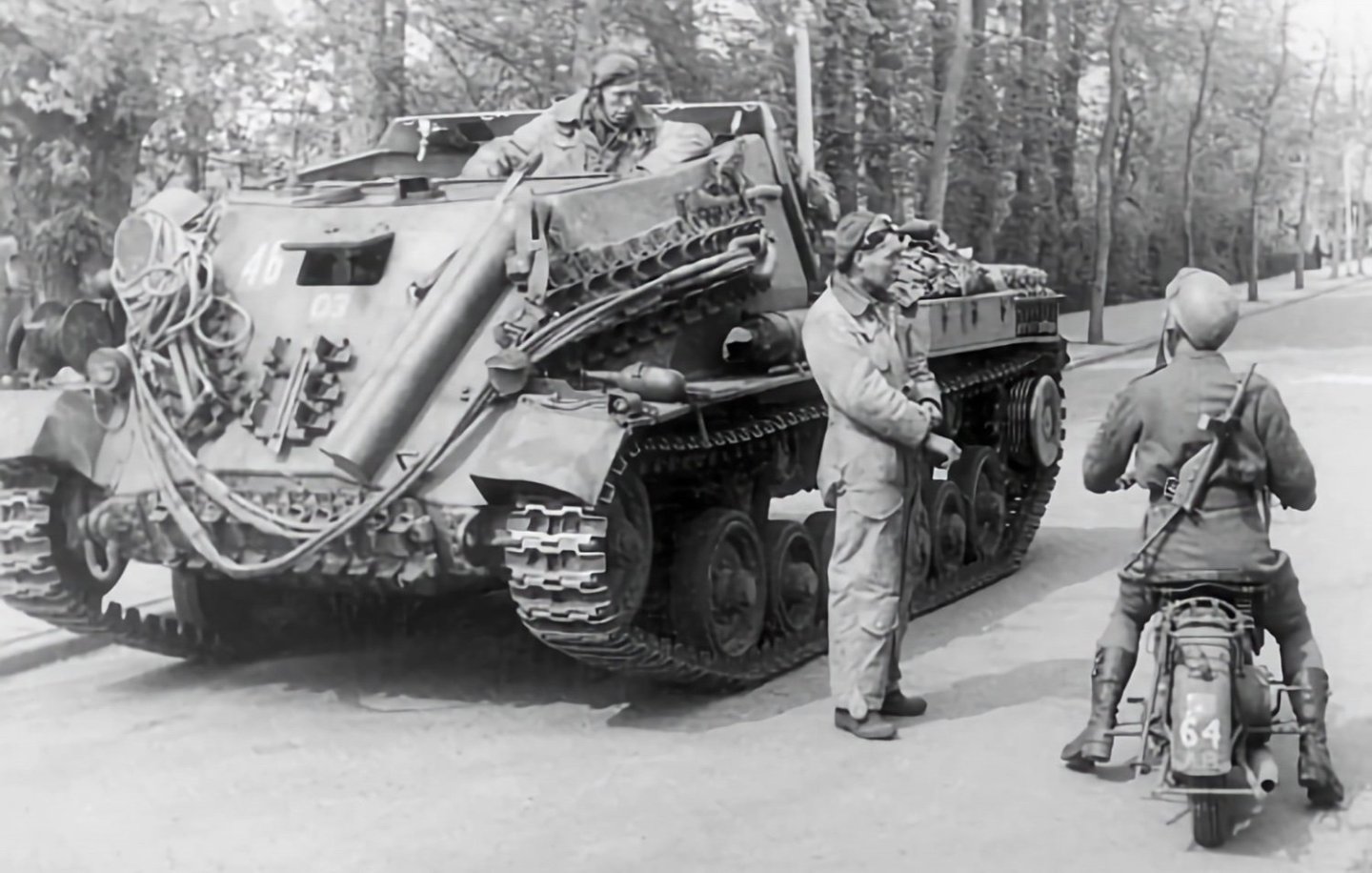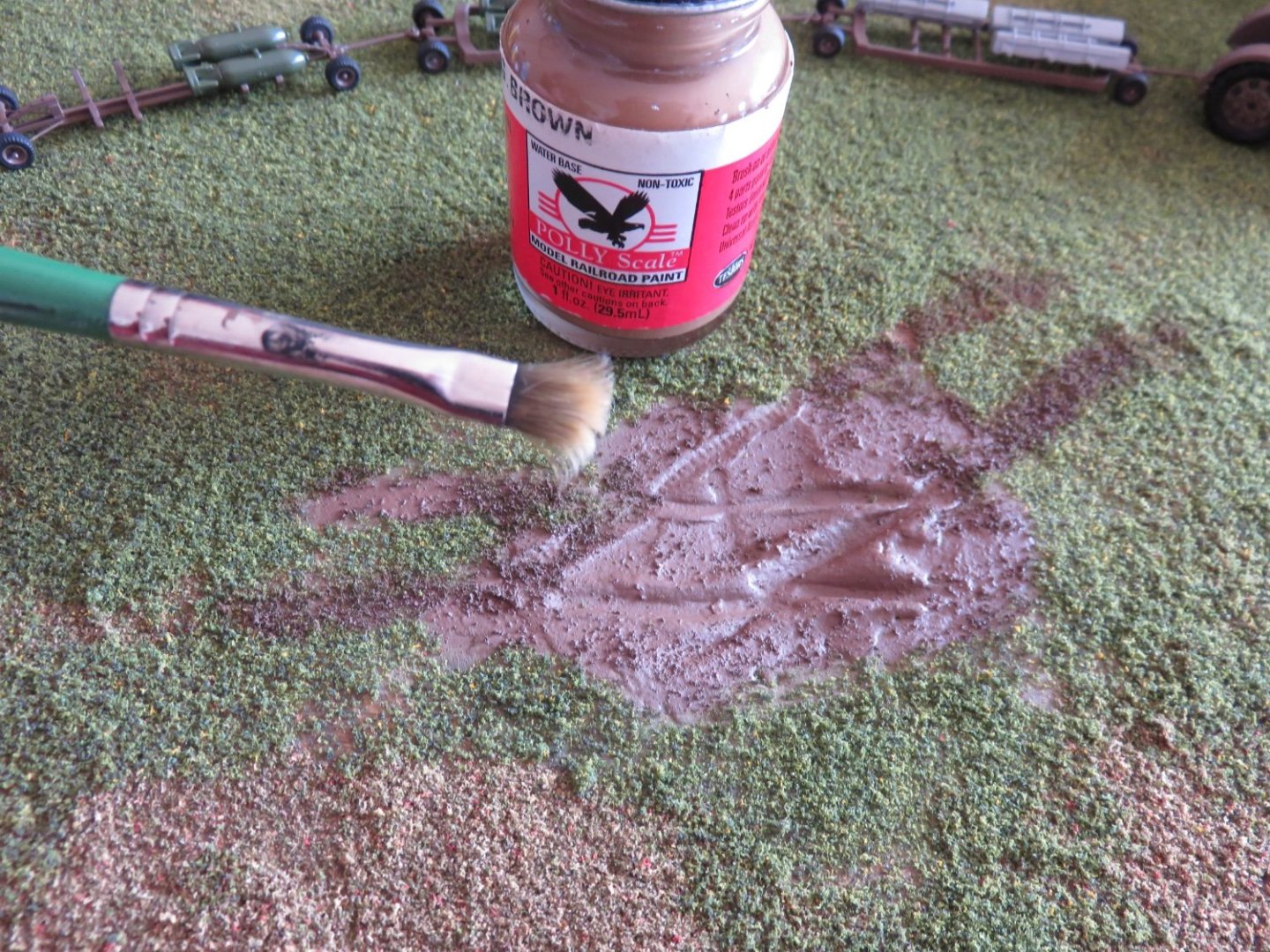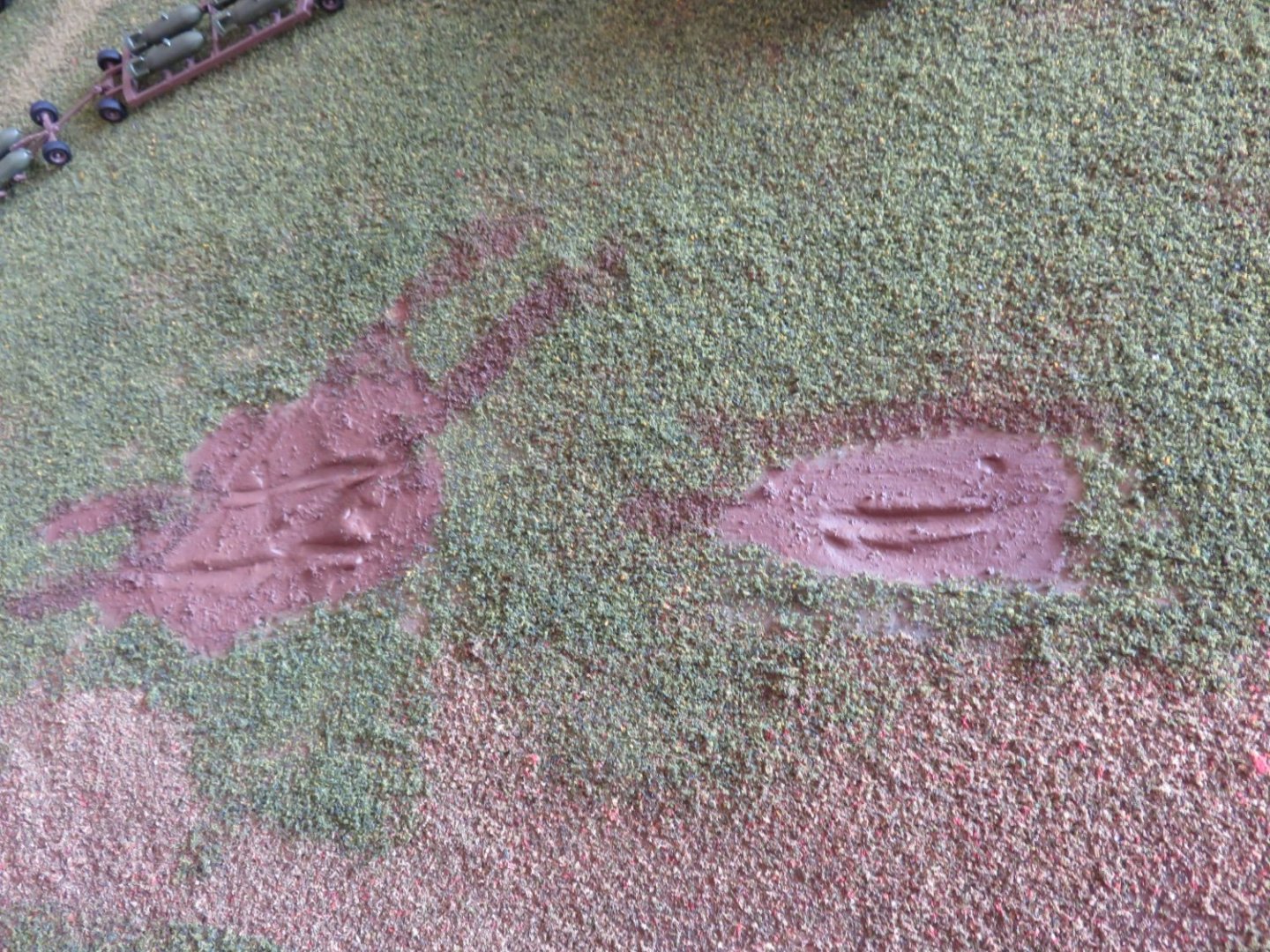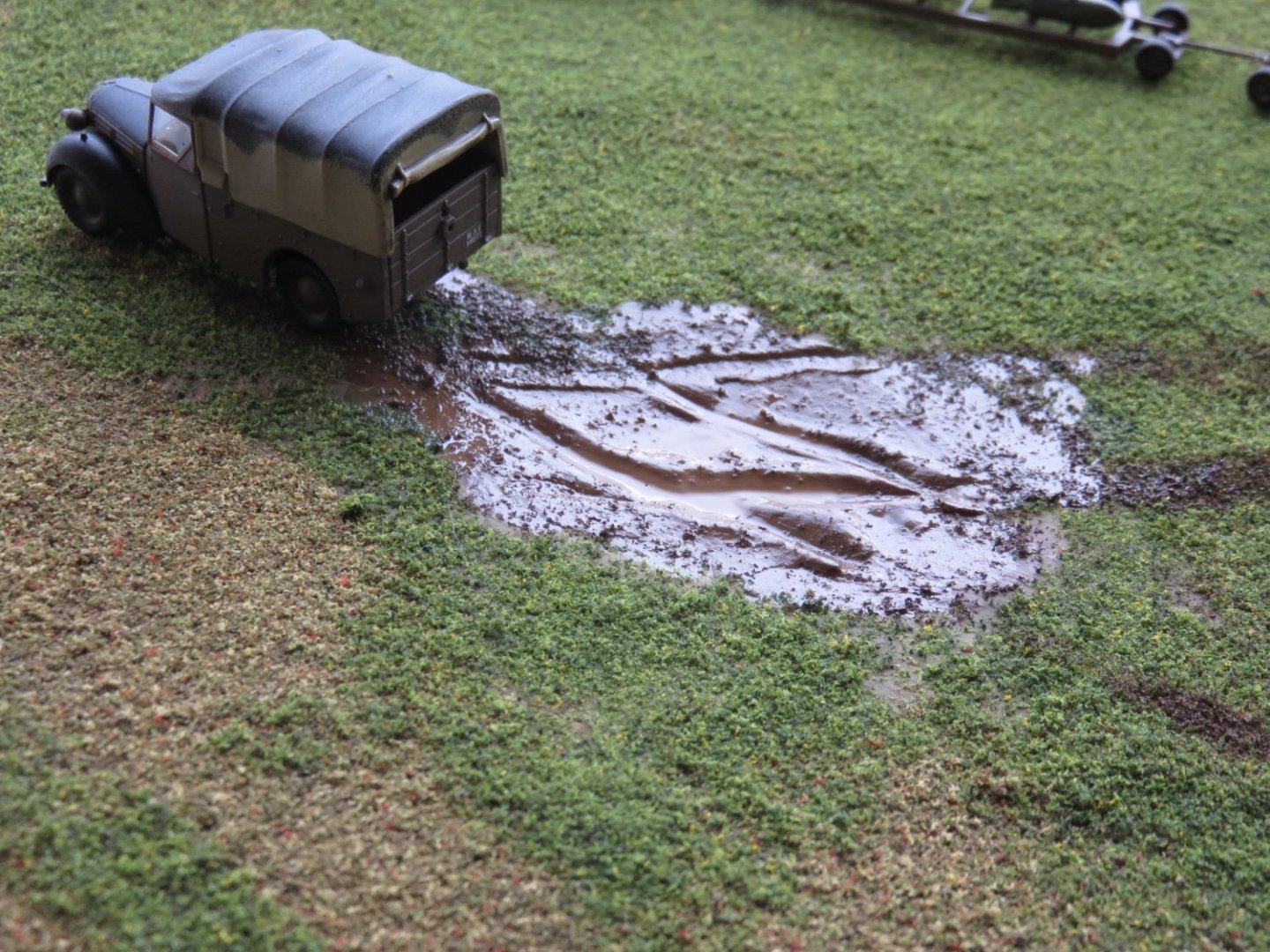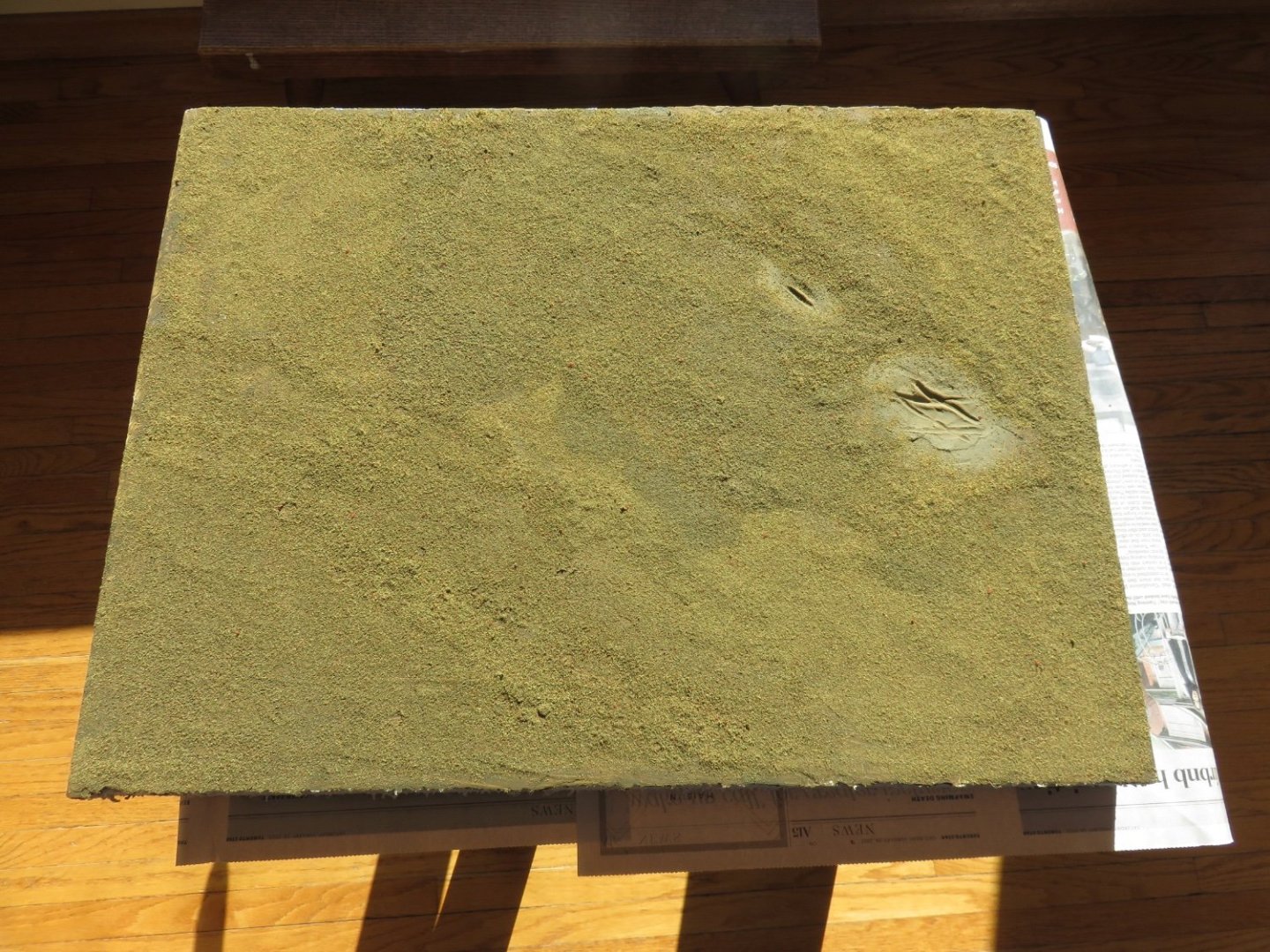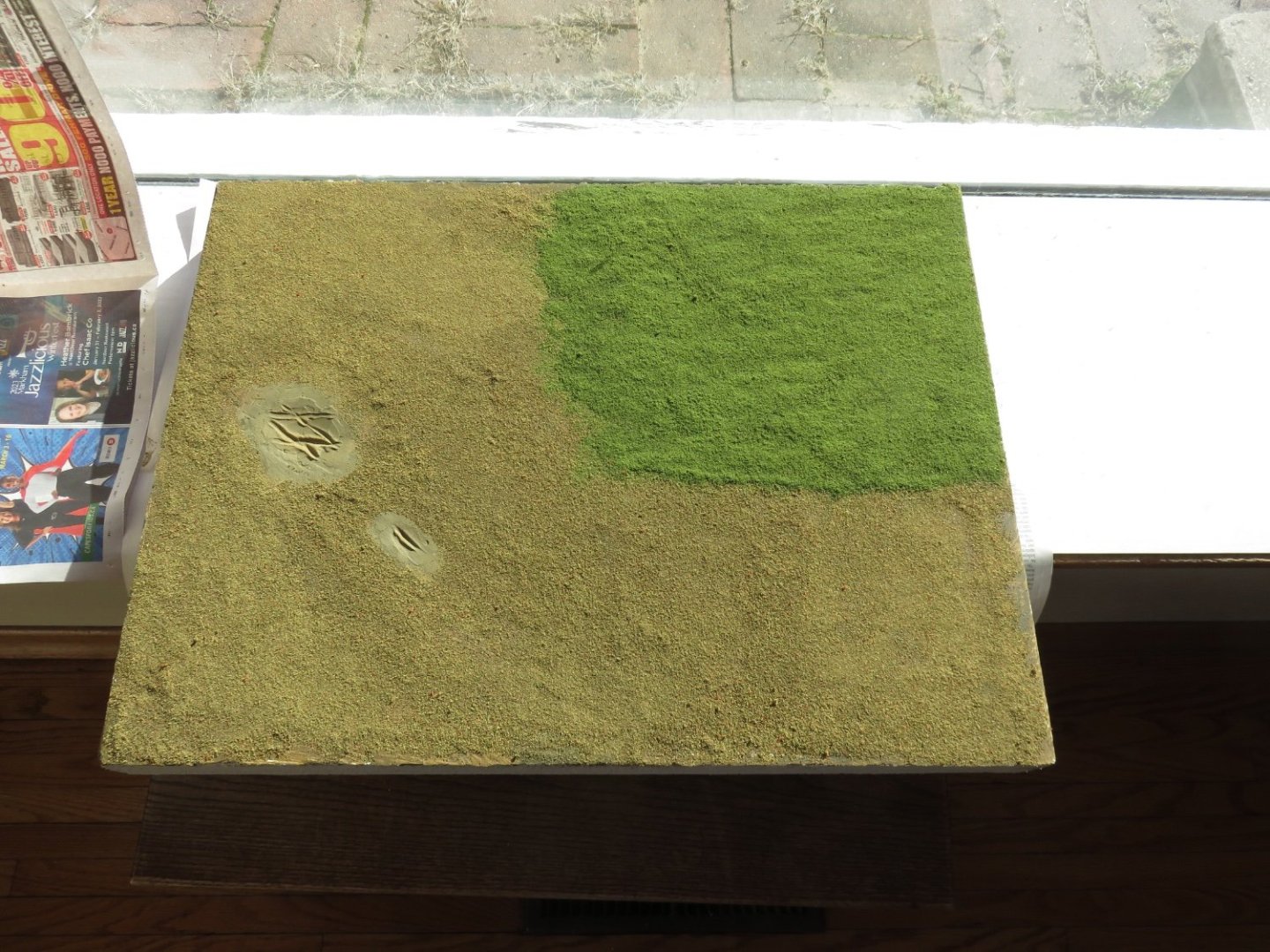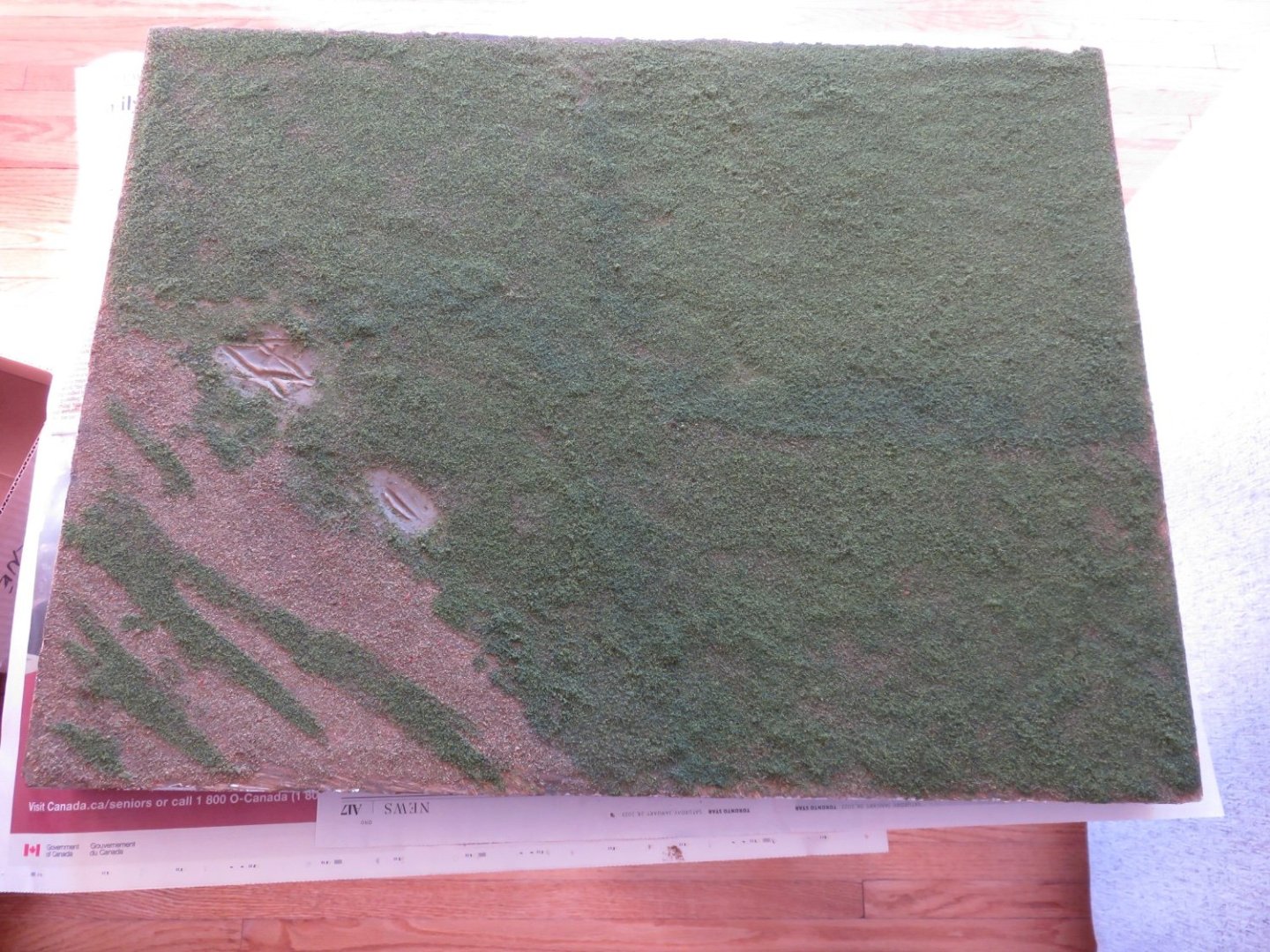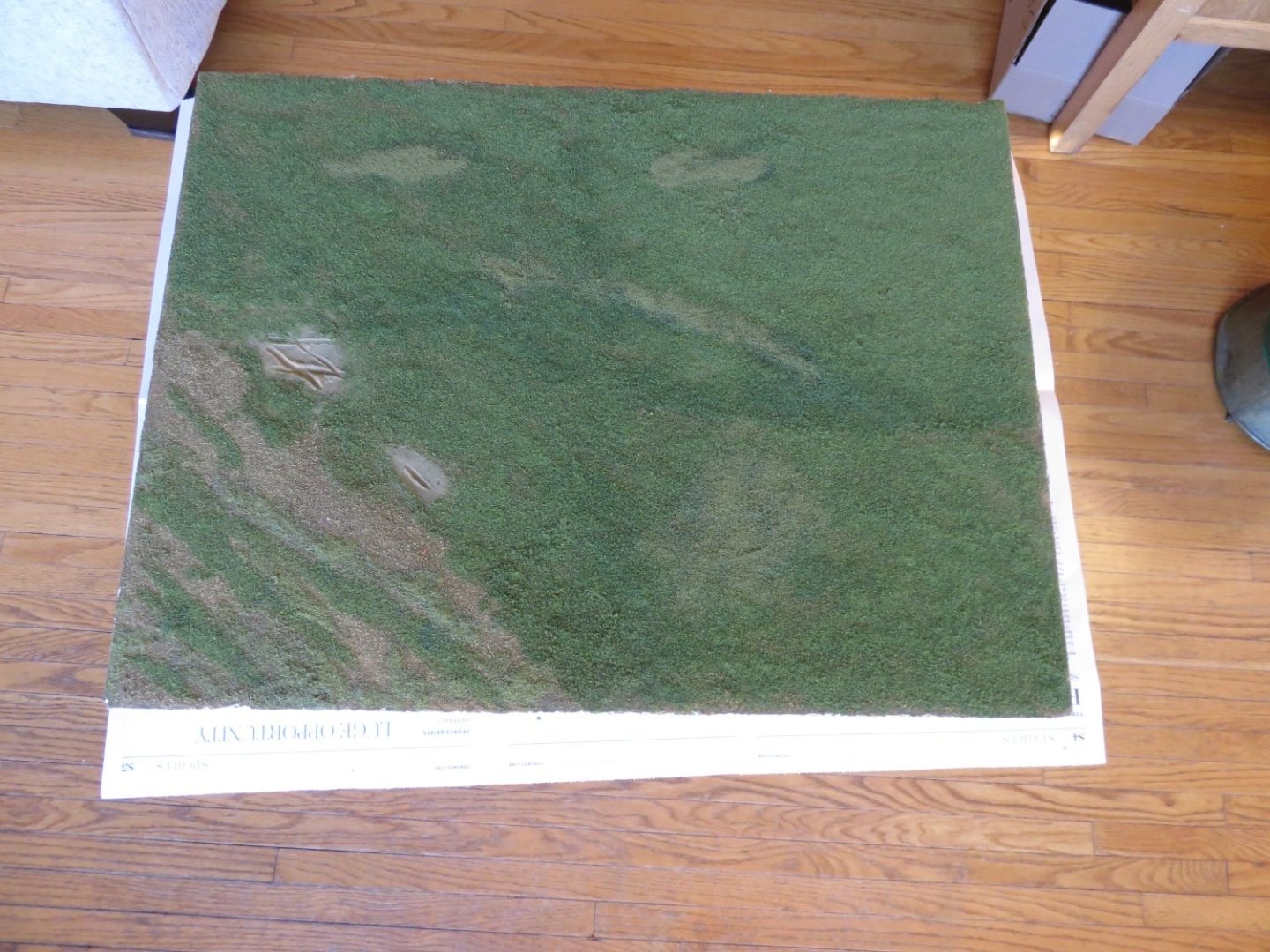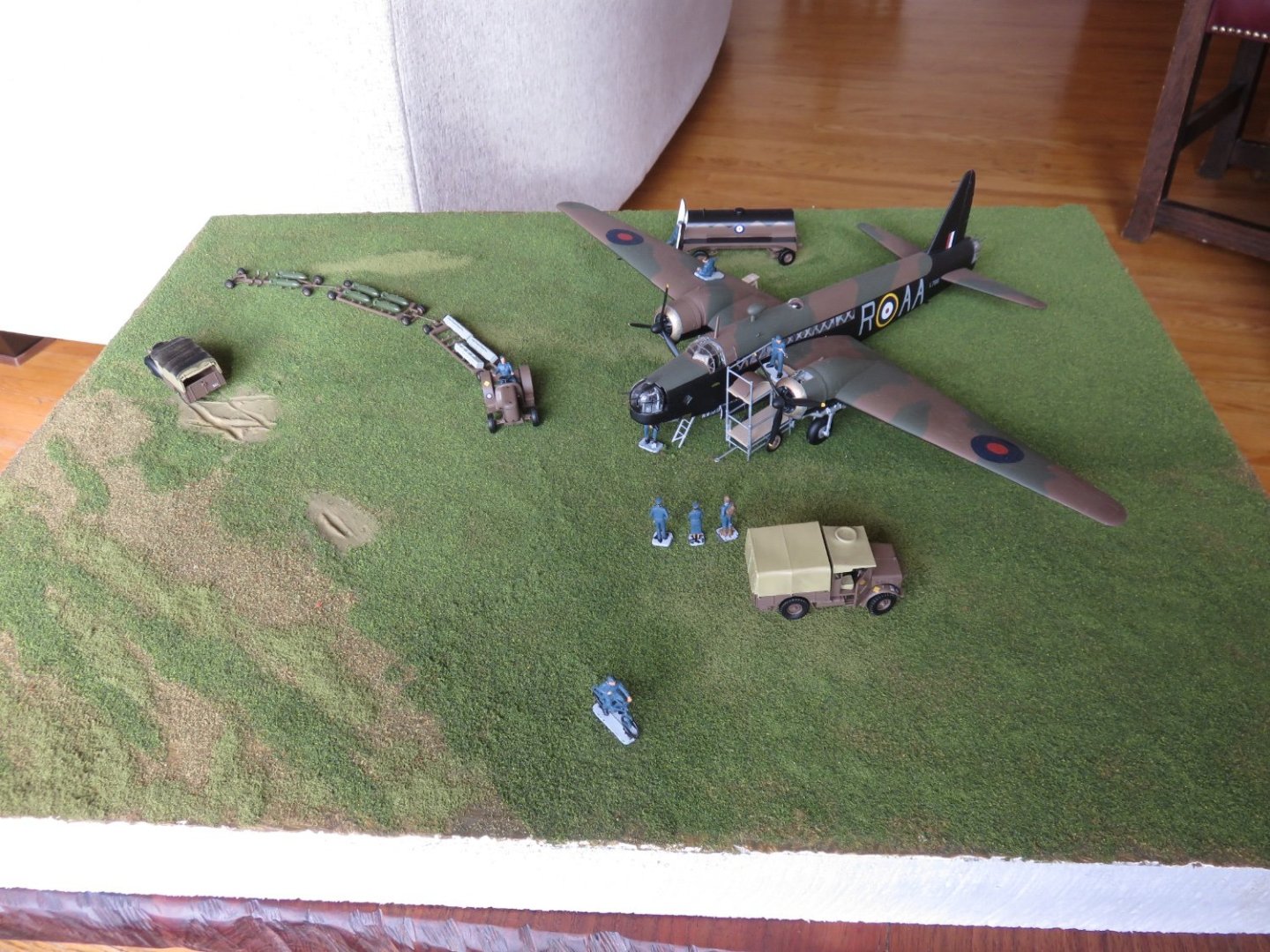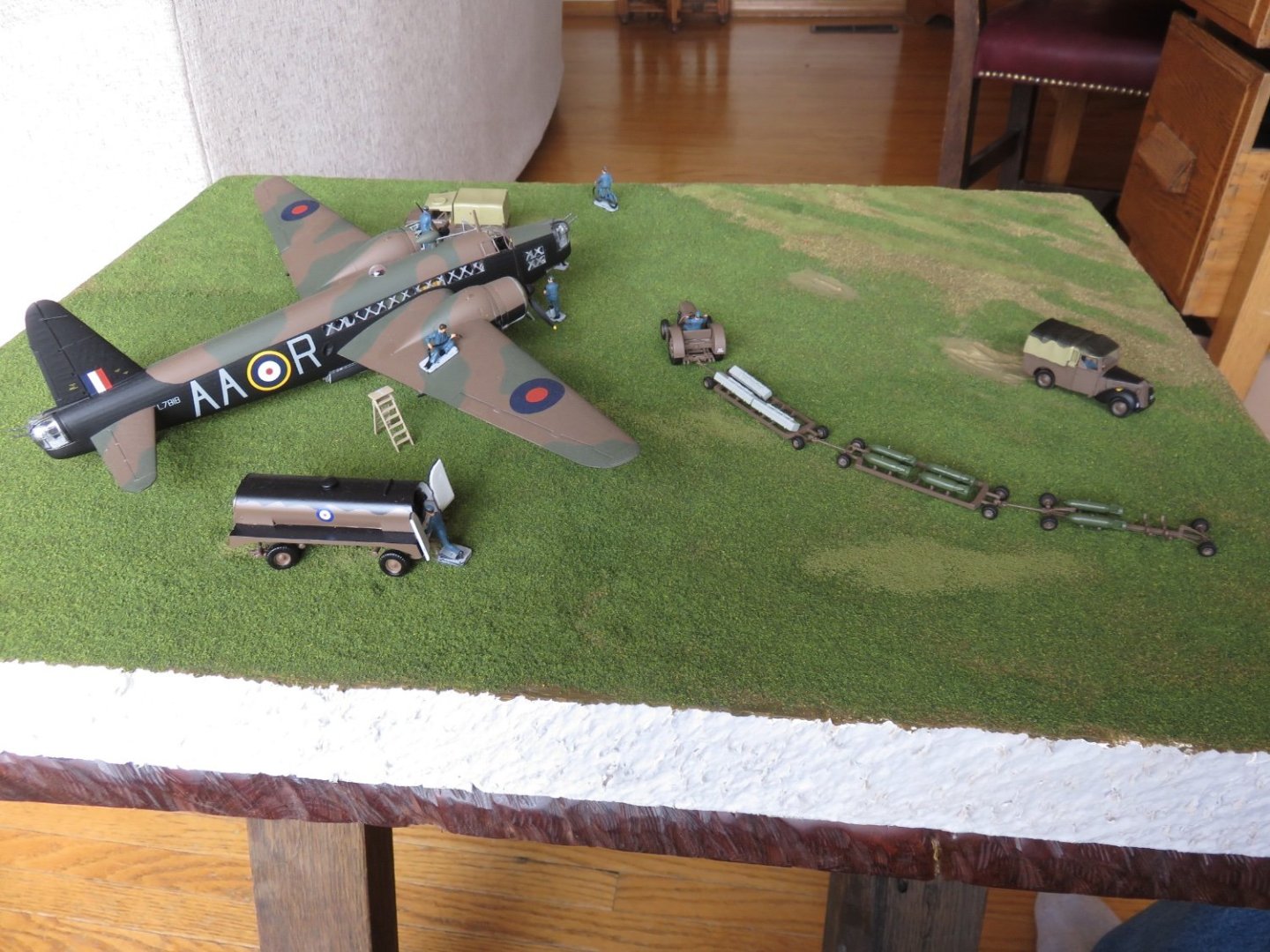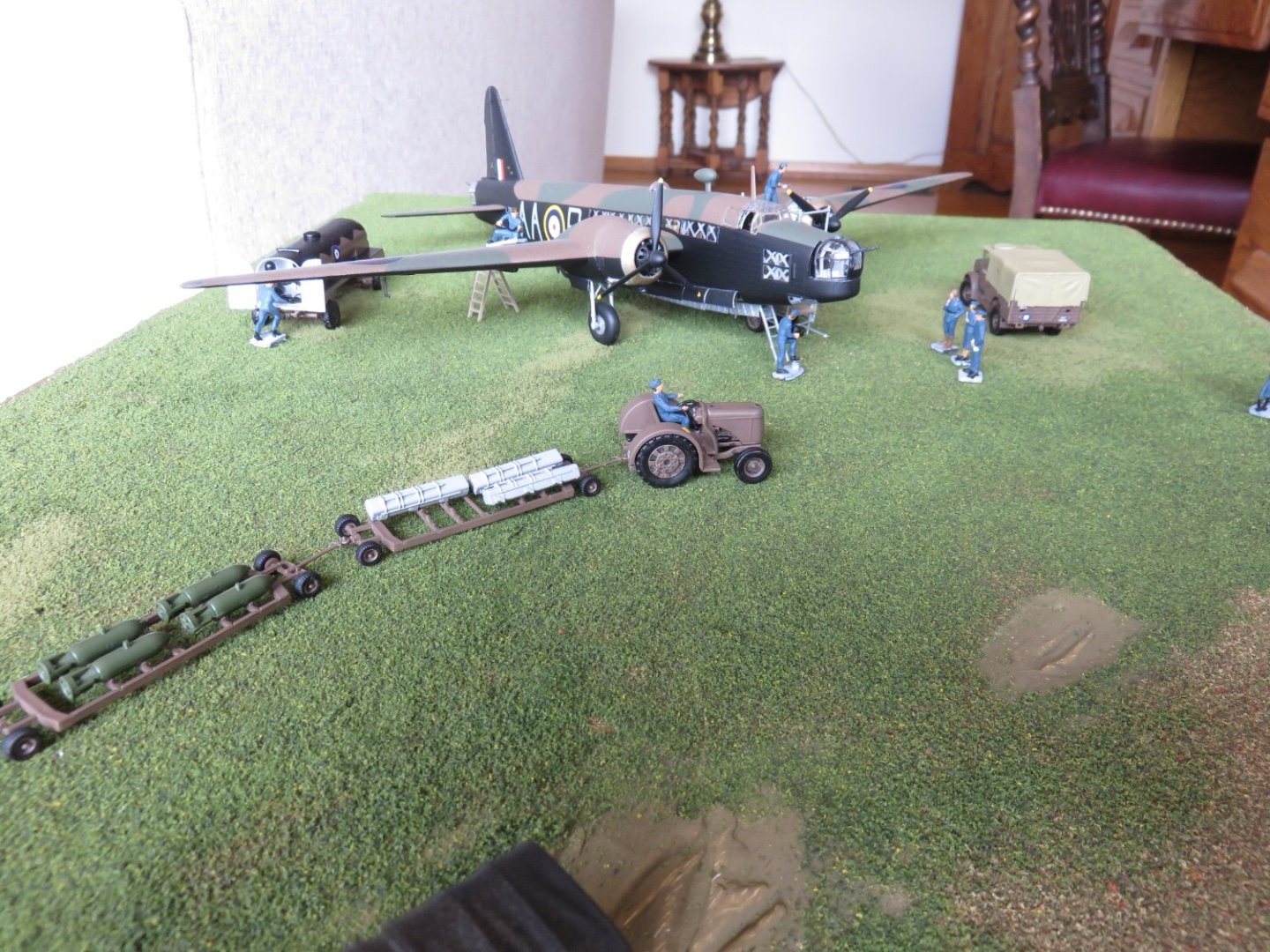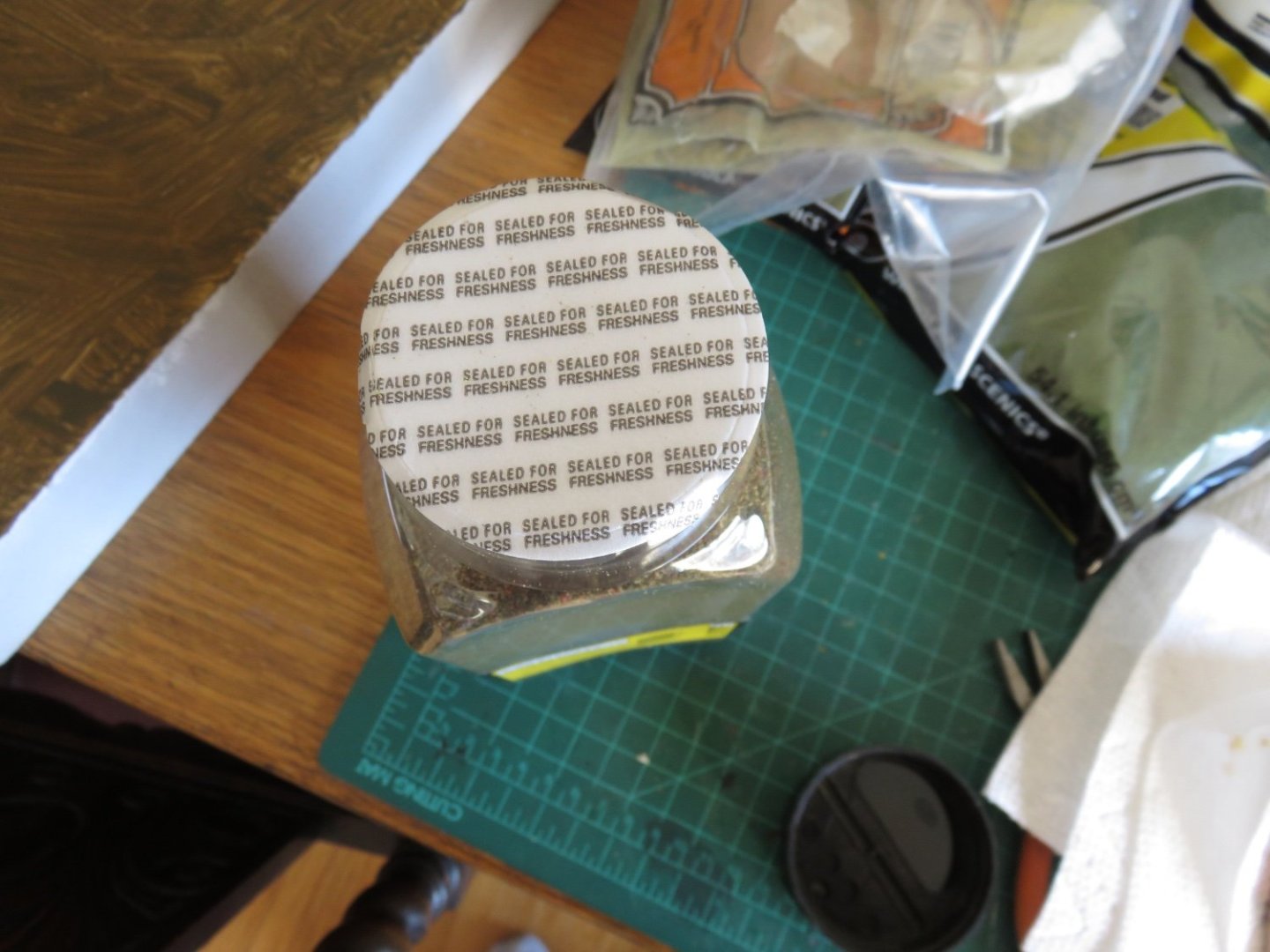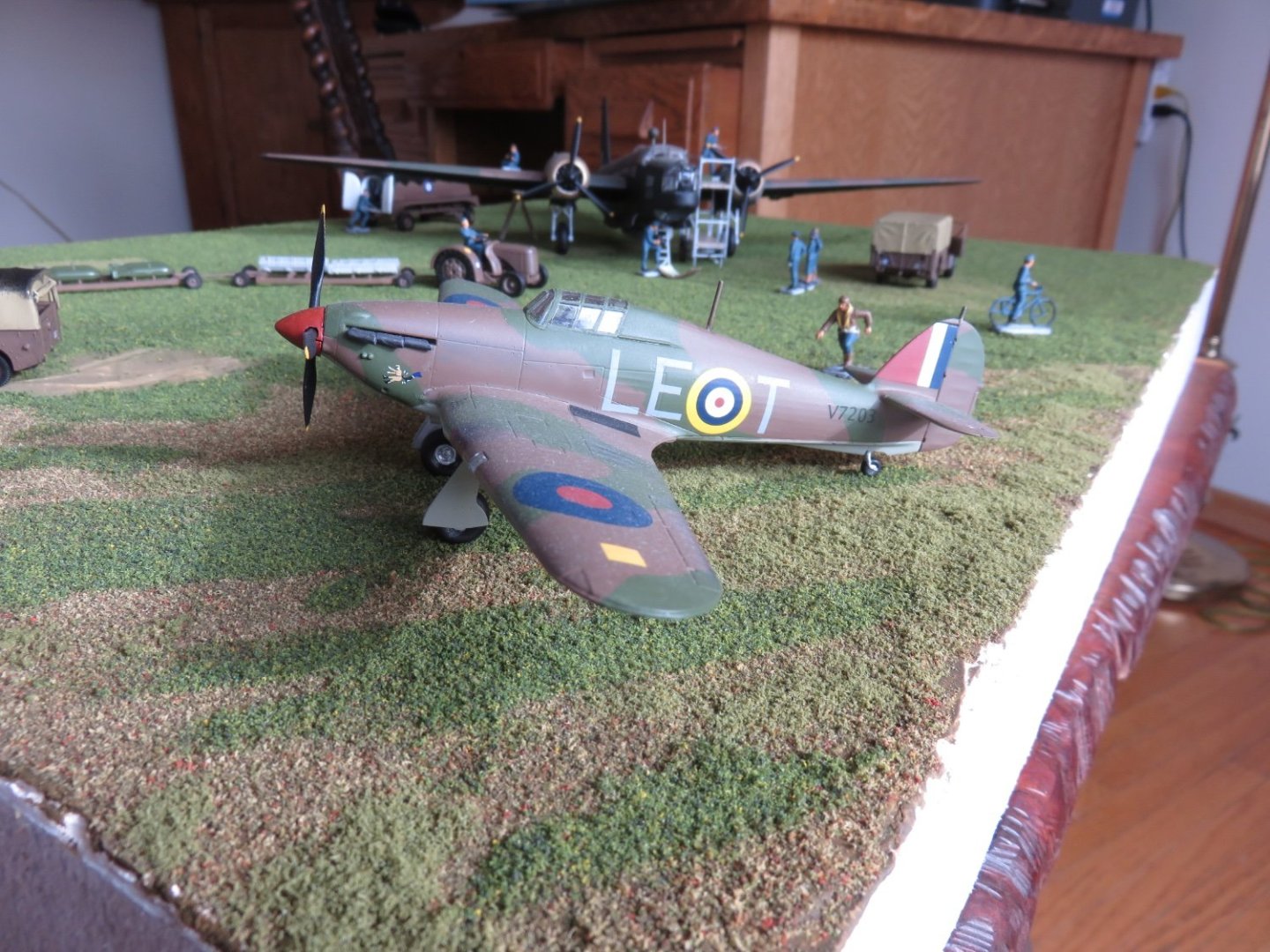-
Posts
3,267 -
Joined
-
Last visited
Content Type
Profiles
Forums
Gallery
Events
Everything posted by realworkingsailor
-
Are there lots of photos in the threads you view? I have an iPhone and while it does start at the “unread” line, as the photos load, the line gets pushed “down” until I’m somewhere in the middle of the page. Any thread I jump to without photos (or maybe one or two small ones) does start exactly at the “unread” line and stays there until I start scrolling. It’s likely a quirk inherent to Apple devices and systems, (how the web browser chooses to loads photos), and not something anyone here has control over. I may be wrong, but that’s my observation. Andy
-
Thanks for the comments and "likes" everyone! Progress as of this morning: Surprisingly, it didn't take as long as I had initially feared after my first test areas, and I think I managed to do fairly well around the mud puddles. In that area, I used a small brush to apply the glue to the areas I wanted it, rather than risking dribbling it in to the puddles by accident. The line between the runway and the field is a little stark, but I plan to soften that by blending the colours in both directions when it comes time to add more layers of grass. I think the variation in the green colour is probably due to the inconsistency of the grass coverage, which isn't a bad thing. The darker areas are where the underlying ground foam is showing through somewhat. I think it adds a nice variety of shading to the otherwise uniform green. You can even make out a subtle under shading in the runway area where I had put streaks of green foam as well. Now it's on to blending, mixing and layering. Andy
-
Thanks Mike! It’s definitely precise, in that you can target the bottle spout into various nooks and crannies, rather than broadcasting the grass all over the place and hoping for the best. I think the key benefit over just sprinkling, is that it does impart a modicum of a static charge to the grass (one that builds up the longer one repeatedly squeezes the bottle), so the grass does more or less what it is supposed to do (stand somewhat upright). Andy
-
As always, I would be remiss if I didn't start by thanking everyone for your kind comments and "likes"! I've managed to make something of a start with the static grass. What a fun process it is! First up, the glue. You don't have to spend exorbitant amounts of money buying specialty glue. I made my own with some watered down PVA. I initially tried a 3 parts water to 1 part glue, but found I had to add a little bit more glue, so it's closer to 1.5 parts glue. I also added a few drops of isopropyl alcohol as a wetting agent (helps break down the surface tension). This was dribbled and brushed on to where I wanted to apply the static grass. I should mention that I don't have a static grass applicator... at least, not the fancy electrical variety. A few weeks ago I saw this video about someone who just used an inexpensive condiment bottle to apply static grass: So rather than spend a ton of money on a fancy grass applicator, or putting my electrical mad scientist to work mutilating a bug zapper racquet into a homemade Frankenstein-ian Van de Graaff generator, I decided to give this method a shot. It does work, and very well, but it does restrict to a small working area... there's only so many times I can rapidly "poof" a condiment bottle before my hands get tired! Don't fill up the bottle too much, about the amount you see in the above photo is more than enough, and it will cover a surprisingly large area (big enough that your hand will be start to cramp!). The results shown here are using 4mm static grass. I did try a test area using 2mm grass, but it came out too quickly and became somewhat clumpy. Not altogether horrible, but not the effect I was after. The repeated "poofing" action generates just enough static electricity for the grass to do its thing. The lighter area in the photos is just due to the glue having not yet fully cured. The ground foam underneath provides a great stable base and the state grass grabs really well, after letting the glue set up for only a couple of minutes. I have some "burnt grass" and "straw" colours that I will layer on later to add highlights and break up the monotonous green. For that I'm planning on using some inexpensive hair spray as an adhesive. From what I've read, the odourless "extra hold" stuff works just as well, if not better than so-called specially formulated static grass adhesive sprays. For the more well trodden areas, I will reverse the colours, starting with the burnt grass and adding green highlights. I should mention, that I have managed to keep the mess under some level of control... so far..... Andy
-
Compared to the countryside that the Americans faced, the area of Normandy that the Canadians fought was comparatively wide open. If I’m not mistaken, Mr Robertshaw is standing just above St. Martin de Fontenay. If you have “Breakout From Juno” by Mark Zuehlke, you can see the map for “Operation Spring”. Otherwise, let me know and I can pm you. Andy
-
Thanks! The roughness of the foam is proportional to the roughness of the tool used to carve. If I had a hot wire foam tool it would have been much cleaner. I guess I could have carved recesses for the figure bases, but I don’t think I could have got the bases in any kind of presentable shape. The Airfix figures are moulded in a soft acetal plastic, akin to Delrin, and from a very old tooling… there’s lots of rubbery, hard to remove flash, and they really don’t take paint all that well, and if they do, they don’t tolerate any kind of abuse. I’ll hopefully get a hold of some static grass soon, there’s a model train show not too far away this weekend, I may poke my nose in the door for a gander; see what’s there. Andy
-
Not to worry, those obnoxious bases will be removed in due course. I plan on using a short length of fine wire to hold them in place (I have some nice 0.015” stainless kicking around). I will be adding some static grass next, so everything is just temporarily in place for now. I’m just waiting for the hobby shop to restock what I need. Andy
-
Mud, mud glorious mud.... I think I've managed to create a reasonably convincing miniature mud puddle! No small feat considering there's nothing even remotely close to dirt or water even involved.... I first painted on a couple of coats of acrylic paint. I think it's important to stipulate, that I've had this paint for a while, and it has thickened up noticeably in the bottle. Which is good for what I'm going after here. The paint was dabbed and stippled on in the "muddy" area, and in areas where vehicle wheels would have shed any mud they picked up as they drove through. I applied a couple layers of this thickened brown paint until I had something of a desired texture. When the brown paint had dried, I then added a coat of clear acrylic gloss to the muddy area, in order to convey wetness. This was spread out in most places to the edge of the "grass", but in a couple small places I left it back a bit in order to hint of a slight amount of drying. For the final (?) layer, I made a mixture of about 6 parts gloss to 1 part brown paint. This was dribbled into the lowest areas of the puddle to simulate a bit of standing, muddy water. I was looking at the options the WS provides to make water and they're all a little pricey for the amount I need (~$40CAD for a bottle of "water", plus another ~$15 for colour tint). I think my budget "water" works perfectly well! How that Tilly made it through that sloppy mess, I'll never know! Anyone else for a bit of mudding? Andy
-
Thanks guys, I’m glad you’re finding reasons for me to justify adding the Hurricane! I think, though, @Egilman you’ve hit the nail on the head with your last remark, about giving the scene that sense of space. While the Hurricane does look good, I really think it makes it look too busy, and it takes away that sense of space. I’ll probably build a separate (and smaller) base just for it on its own (with a figure or two for fun). Also, the Hurricane is from 1940, and the Bomber from 1941… must have been some pretty rough weather to divert that pilot a year forward in time…😜 Andy
-
I wonder if the black demarcation, that makes the cover boards appear to be in pairs, is not a channel for a securing batten? The hatch coamings appear to be nothing more than a toe rail, so perhaps this would allow the battens to be even height with the coamings. If you look at the forward “pair”, they appear to be leaning at an odd angle that doesn’t appear to lend itself to two individual boards being stacked in such a manner. Andy
-
Thanks for all the "likes" everyone! Rather quick progress has been made, and a lot of matte medium has been consumed in the process! After painting, the first layer of ground cover was added. This consisted of a mostly uniform layer of Woodland Scenics "Earth Blend" Sealed for freshness! The end result: When the matte medium had dried, I began adding WS "Green Blend": A key trick to scenery is to work in small areas, it helps too keep things from getting out of hand, and you don't end up with areas that don't adhere properly as the glue has begun to set For the "runway" area I applied only a few streaks of green blend to simulate dried/dead patches of grass interspersed with greener grass. This was then followed up with some additional blotches of "burnt grass" to add some variation to the uniform green layer: Once all the matte medium had dried, I couldn't wait to see how things looked: I know if I wanted to, I could stop here and be mostly satisfied (the mud puddles still need some work, though), but I intend to take this up a level and I will come back and apply some layers of static grass to really make the ground cover "pop". For now I'm really happy with the way things are looking. And just for fun, I placed my Hurricane on the runway to see what it would look like: Likely an improbable scenario, but....... Andy
-

Mysterious shipwreck washes up on Canadian coast
realworkingsailor replied to Kevin's topic in Nautical/Naval History
Probably something like "What's most people's concerns is, dey don't waants it to back out to sea. If it do go back to sea dey's not gunna know nuttin"
About us
Modelshipworld - Advancing Ship Modeling through Research
SSL Secured
Your security is important for us so this Website is SSL-Secured
NRG Mailing Address
Nautical Research Guild
237 South Lincoln Street
Westmont IL, 60559-1917
Model Ship World ® and the MSW logo are Registered Trademarks, and belong to the Nautical Research Guild (United States Patent and Trademark Office: No. 6,929,264 & No. 6,929,274, registered Dec. 20, 2022)
Helpful Links
About the NRG
If you enjoy building ship models that are historically accurate as well as beautiful, then The Nautical Research Guild (NRG) is just right for you.
The Guild is a non-profit educational organization whose mission is to “Advance Ship Modeling Through Research”. We provide support to our members in their efforts to raise the quality of their model ships.
The Nautical Research Guild has published our world-renowned quarterly magazine, The Nautical Research Journal, since 1955. The pages of the Journal are full of articles by accomplished ship modelers who show you how they create those exquisite details on their models, and by maritime historians who show you the correct details to build. The Journal is available in both print and digital editions. Go to the NRG web site (www.thenrg.org) to download a complimentary digital copy of the Journal. The NRG also publishes plan sets, books and compilations of back issues of the Journal and the former Ships in Scale and Model Ship Builder magazines.

